Radio Control Terminology and Abbreviations
Synopsis: I have been compiling a list of terminology and abbreviations over the years, some going back a long time ago when I was kid in the 70s. This list keeps getting longer each year, with new buzz words in the RC Drone arena. Hope this helps and thanks to many who contributed over the years.
2.4GHz – a.k.a. Spread Spectrum. The newest radio band available for R/C use. Operates at higher frequencies than noise. See also: FHSS and DMSS…
ABC / Non-Ringed – These letters stand for aluminum, brass and chrome or a composite such as nickel. These engines have an aluminum piston and a chrome or composite coated brass cylinder sleeve which allows them to be more efficient for higher performance. They have no piston ring and rely on a very tight piston/cylinder fit to obtain a piston/cylinder seal. New ABC engines are normally hard to turn over by hand. Because of the tight fit, it is very important that the engine is broken in properly.
Adjustable Travel Volume (ATV) – ATV allows you to preset the maximum travel of a servo to either side from its neutral position. Such settings help tailor control action to suit your flying or driving style.
Adverse Yaw – The tendency of an airplane to yaw in the opposite direction of the roll. For instance, when right aileron is applied, the airplane yaws to the left, thus opposing the turn. Adverse yaw is common in trainer type airplanes having flat bottom wings. It is most noticeable at slow speeds and high angles of attack, such as during takeoffs and when stretching a landing approach. Caused by the unequal drag of the upward and downward deflection of the ailerons, this undesirable trait can be minimized by setting up the ailerons with Differential Throw or by coordinating the turns, using the aileron and rudder controls simultaneously. (See Differential Throw.)
Ailerons – Hinged control surfaces located on the trailing edge of the wing, one on each side, which provide control of the airplane about the roll axis. The control direction is often confusing to first time modelers. For a right roll or turn, the right hand aileron is moved upward and the left hand aileron downward, and vice versa for a left roll or turn.
AMA – The Academy Of Model Aeronautics. The official national body for model aviation in the United States. AMA sanctions more than a thousand model competitions throughout the country each year, and certifies official model flying records on a national and international level.
Angle of Attack – The angle that the wing penetrates the air. As the angle of attack increases so does lift and drag, up to a point.
ARF – A prefabricated model – Almost Ready to Fly.
ARR – Some cars and trucks are available virtually prebuilt and will be indicated by the terms ARR (Almost-Ready-To-Run) or RTR (Ready-To-Run). The ARR/RTR vehicles cost a little more, but if you’re just not interested in building your car, this is an option for you. Most vehicles, however, come in kit form and require you to do the building. This may require a few evenings, but the familiarity you gain from assembly will make repairs, adjustments and modifications easier to make down the road.
APM – ArduPilot Mega combines sophisticated IMU-based autopilot electronics with free Arduino-based autopilot software that can turn any RC vehicle into a fully-autonomous UAV. APM is a trademark of 3DRobotics. The open source is referred to Ardupilot, Arduplane, or Arducopter and later DroneCode.
Battery Eliminator Circuitry (BEC) – A circuit that eliminates the need for a receiver battery, usually in electric R/C cars and boats.
BB – These letters usually designate a ball-bearing supported crankshaft in an R/C engine. This makes the engine run smoother and last longer.
Buddy Box – Two similar transmitters that are wired together with a “trainer cord.” This is most useful when learning to fly — it’s the same as having dual controls. The instructor can take control by using the “trainer switch” on his transmitter.
Boring Holes in the Sky – Having fun flying an R/C airplane, without any predetermined flight pattern.
CA – (Abbreviation for “Cyanoacrylate”) – An instant type glue that is available in various viscosities (Thin, Medium, Thick, and Gel). These glues are ideal for the assembly of wood airplanes and other materials. Note: Most CA glues will attack Styrofoam.
Carburetor – The part of the engine which controls the speed or throttle setting and lean/rich mixture via setting of the needle valve.
CG (“Center of Gravity”) – For modeling purposes, this is usually considered — the point at which the airplane balances fore to aft. This point is critical in regards to how the airplane reacts in the air. A tail-heavy plane will be very snappy but generally very unstable and susceptible to more frequent stalls. If the airplane is nose heavy, it will tend to track better and be less sensitive to control inputs, but, will generally drop its nose when the throttle is reduced to idle. This makes the plane more difficult to land since it takes more effort to hold the nose up. A nose heavy airplane will have to come in faster to land safely.
Charge Jack – The plug receptacle of the switch harness into which the charger is plugged to charge the airborne battery. An expanded scale voltmeter (ESV) can also be plugged into it to check battery voltage between flights. It is advisable to mount the charge jack in an accessible area of the fuselage so an ESV can be used without removing the wing. Charger – Device used to recharge batteries, usually supplied with the radio if NiCd batteries are included. Chicken Stick – A hand-held stick used to “flip start” a model airplane engine.
Clunk – A weighted fuel pick-up used in a fuel tank to assure the intake line is always in fuel.
DMSS (Direct Sequence Spread Spectrum) – A 2.4GHz radio system which selects one (or two) of the available “free” frequencies and transmits only on the one(s) chosen. Like FHSS (Frequency Hopping Spread Spectrum) systems, it is resistant to electrical noise. See also: FHSS.
Dead Stick – A term used to describe unpowered flight (glide) when the engine quits running. Differential Throw – Ailerons that are set up to deflect more in the upward direction than downward are said to have
Deans Connector or Deans Ultra-Plug is a low-resistance, high-quality, polarized electrical connector specifically designed for radio control use. This red color connector and its variants get their widely accepted nickname because of the name of their manufacturer, W.S. Deans of Los Alamitos, California USA.
Differential Throw. The purpose is to counteract Adverse Yaw.
Dihedral – The V-shaped bend in the wing. Typically, more dihedral causes more aerodynamic stability in an airplane, and causes the rudder to control both the roll and yaw axis. This is why some trainers and sailplanes require only 3 channels of radio control–i.e., having no ailerons.
Direct Servo Control (DSC) – This radio feature permits you to check servo operation without broadcasting a radio signal. A cable connects the transmitter to the receiver. Direct servo control is very useful for on-the-ground control checks.
Ding – Minor dent or damage to the structure. Also, a nick in a prop. Dinged props must be replaced.
DM – Drone Mission, aka DroneMission.com Search and Rescue
Down Thrust – Downward angle of the engine relative to the centerline of the airplane. Down thrust helps overcome the normal climbing tendency of flat bottom wings.
DroneCode – Open Source projects managed by the Linux Foundation launched October 2014, that sets a new standard of Unmanned Aircraft System development.
Electric vs. Gas Cars – Electric vehicles are the most popular choice in R/C car racing. They are quick, quiet, easy to build and comfortable for the beginning R/Cer to drive. The electric cars are powered with a rechargeable nicd battery that can be charged in as little as 15-20 minutes. A vehicle with a stock motor will provide about 6-8 minutes of run time; with a couple of batteries and a 15 minute charger, an electric car or truck is ready for hours of use. The popularity of Gas vehicles has increased tremendously over the last few years. The explosive power and acceleration of a gas powered car or truck is exciting to watch. Gas vehicles are powered by a small two-cycle engine burning glow fuel (not gasoline!), and many modelers enjoy the realistic sound and smell that goes along with gas powered racing. Some gas models can reach speeds over 50mph! The wider availability of pull-start engines and the new wave of 1/10 scale vehicles has made it much more affordable for the beginner to enter gas-powered racing.
Electric Starter – A hand-held electric motor used for starting a model airplane engine. Usually powered by a 12-volt battery.
Electronic Speed Control (ESC) – Electronic speed controls replace the mechanical speed control and servo providing enhanced power efficiency and precision in an electric R/C car or boat. In addition, they are lighter which improves the performance of some electric models.
Elevator – Hinged control surface located at the trailing edge of the horizontal stabilizer, which provides control of the airplane about the pitch axis and causes the airplane to climb or dive. The correct direction of control is to pull the transmitter elevator control stick back, toward the bottom of the transmitter, to move the elevator upward, which causes the airplane to climb, and vice versa to dive.
Endpoint Adjustment – This radio feature adjusts the length of servo travel in one direction (a single channel will have adjustments for two endpoints). If your plane rolls faster one way than the other, endpoint adjustments can correct the problem.
Epoxy – A two-part resin/hardener glue that is extremely strong. It is generally available in 6 and 30-minute formulas. Used for critical points in the aircraft where high strength is necessary.
Expanded Scale Voltmeter (ESV) – Device used to read the battery voltage of the on-board battery pack or transmitter battery pack.
FHSS (Frequency Hopping Spread Spectrum) – — A 2.4GHz radio system which switches from one “free” frequency to another every few milliseconds. While jumping from one to the other frequency, you are not spending much time on that frequency and this keeps out interference. See also: DMSS.
Field Charger – A fast battery charger designed to work from a 12-volt power source, such as a car battery.
Flaps – Hinged control surface located at the trailing edge of the wing inboard of the ailerons. The flaps are lowered to produce more aerodynamic lift from the wing, allowing a slower takeoff and landing speed.
Flaps are often found on scale models, but usually not on basic trainers.
Flare – The point during the landing approach in which the pilot gives an increased amount of up elevator to smooth the touchdown of the airplane.
Flight Box – A special box used to hold and transport all equipment used at the flying field.
Flight Pack (or Airborne pack) – All of the radio equipment installed in the airplane, i.e., Receiver, Servos, Battery, Switch Harness.
Flutter – A phenomenon whereby the elevator or aileron control surface begins to oscillate violently in flight. This can sometimes cause the surface to break away from the aircraft and cause a crash. There are many reasons for this, but the most common are excessive hinge gap or excessive “slop” in the pushrod connections and control horns. If you ever hear a low-pitched buzzing sound, reduce throttle and land immediately.
Four Stroke (Four Cycle) – Although a 4-stroke engine has less power than a 2-stroke engine of comparable size, there are advantages to 4-stroke engines. They do not require a muffler and are often quieter than most 2-strokes are with a muffler. They can swing a bigger prop than the same size 2-stroke engine. This is an asset in the large, slow-flying aerobatic and scale models where 4-stroke engines are usually mounted. Lastly, the fuel economy is better.
FPV – First person view, also known as remote-person view (RPV), or simply video piloting, is a method used to control a radio-controlled vehicle from the driver or pilot’s view point.
Frequency Control – The FCC has allowed the 72MHz band to be used for R/C aircraft operations. This band is divided up into many different channels in which you can choose a radio system. You should be aware that certain areas have frequencies in which there is pager interference. This is why it is always a wise move to check with your local hobby shop to find out any channels that may be troublesome in the area you wish to fly.
Frequency Module – A frequency module plugs into the transmitter and enables you to change the channel number your radio broadcasts on.
Fuel Overflow Line (Vent) – The fuel line is either open to atmospheric pressure or attaches to the muffler pressure nipple to pressurize the fuel tank for better fuel flow to the engine. This is the line through which the fuel will overflow when the tank is full.
Fuel Pick Up-Line – The fuel line in the fuel tank through which fuel travels to the carburetor. Typically a flexible tube with a weight or “Clunk” on the end which allows it to follow the fuel with changes in aircraft attitude. This is the line through which the tank is filled.
Fuselage – The body of an airplane.
Gimbal – A gimbal is a pivoted support that allows the rotation of an object about a single axis. It is commonly used these days to stabilize a camera, giving you a smooth cinematic recording of a video.
Glitch – Momentary radio problem that never happens unless you are over trees or a swamp.
Glow Plug – The heat source for igniting the fuel/air mixture in the engine. When starting the engine a battery is used to heat the filament. After the engine is running, the battery can be removed. The wire filament inside the plug is kept hot by the “explosions” in the engine’s cylinder. (See next heading and “Idle Bar” Plug.)
Glow Plug Clip/Battery – A 1.2-volt battery, which is connected to the glow plug on a model airplane engine for starting. The battery is removed once the engine is running steadily.
GoPro – a popular high-definition action sports camera used on model aircraft these days.
Grease-In – A very smooth, gentle landing without a hint of a bounce.
Hit (or to be hit) – Sudden radio interference which causes your model to fly in an erratic manner. Most often caused by someone turning on a radio that is on your frequency, but can be caused by other radio sources miles away.
Horizontal Stabilizer – The horizontal tail surface at the back of the fuselage which provides aerodynamic pitch stability to the airplane.
Idle Bar Plug – This type of glow plug has a “bar” across the tip to help prevent raw fuel from being splashed onto the glow element. Too much raw fuel will cool the plug and prevent it from igniting the fuel/air mixture. An idle bar is a help in obtaining a low idle speed.
iLook+ a all-in-one FPV camera with built-in video transmitter made by Walkera, sometimes refer to as a FPV pack.
IOC (intelligent orientation control) flying regardless of aircraft heading using GPS, it is relative to where you are standing. Forward is forward, backward is pulling back, regardless of which direction the model is facing.
Kit – A car, truck, boat, airplane, multirotors or heli that requires the modeler to do most/all of the building and finishing work. Modelers are likely required to add their own power plant, radio system or both.
Lateral Balance – The left-right or side-to-side balance of an airplane. An airplane that is laterally balanced will track better through loops and other maneuvers.
Leading Edge (LE) – The very front edge of the wing or stabilizer. This is the edge that hits the air first.
LiIon Battery – Lithium Ion Battery. They are lighter in weight and have a much lower (5%) discharge rate than NiCds or NiMHs (30%).
LiPo Battery – Lithium Polymer Battery. Derived from Lithium Ion batteries, they’re compact and light, with the ability to offer 30% more power in less space than comparable NiCds and NiMHs. Must be used with a LiPo-compatible balancing charger.
M.A.A.C. – Model Aircraft Association of Canada. The official governing body for model aviation in Canada acting as a liason to government agencies, such as Industry Canada (formerly Department of Communications) with regard to radio frequencies and their use in R/C models, as well as representing internationally competitve modelers to the Fédération Aéronautique International (FAI) through the Aero Club of Canada. M.A.A.C. also provides liability insurance to its members and chartered clubs, among many other membership benefits.
mAh (Milliamp Hour) – A measure of a battery’s total capacity. The higher the number (ex. 600 mAh, 1,500 mAh) the more charge a battery can hold and usually, the longer a battery will last under a certain load. Typical rechargeable receiver battery packs are in the 500-600 mAh range. Typical R/C car motor batteries are in the 1,200 – 1,500 mAh range.
Mixing (Coupling) – Two radio control channels can be coupled together so that they move together when only one control channel is activated. Many 1/4 scale models require a combination of aileron and rudder to turn. Mixing does this electronically at the transmitter. V-tailed models, where the two halves of the V-tail must move not only together but independently, are another use of control mixing.
Mode 1 / Mode 2 – Refers to the stick configuration of an aircraft transmitter’s control sticks. Mode 1 has the aileron/throttle on the right stick and the rudder/elevator on the left. Mode 1 is popular in Europe and Asia. Mode 2 is the USA standard and has the elevator/aileron on the right stick and the rudder/throttle on the left. Almost all radios used in the USA, Canada, Central and South America are Mode 2. All 4-channel and above aircraft radios sold by Tower Hobbies are Mode 2 unless otherwise noted.
Monster Truck – Monster trucks are gigantic! They are the king of the hill in any group of R/C vehicles. Designed for torque instead of speed, these car crushers can move up hills, down slopes and over unsuspecting cars by virtue of sheer, brute power. The gas powered monster trucks are nearly unstoppable.
Muffler – A device attached to the exhaust stack of the engine to reduce noise and increase back pressure which helps low speed performance. Note: Most R/C Clubs require the use of mufflers.
Muffler Baffle – A restrictor plate inside the muffler which reduces engine noise. This plate can be removed to increase power, but only if there are no noise restrictions where you fly.
Needle Valve – Adjustment on a carburetor used to set proper fuel/air mixture. Some carburetors have separate needle adjustments for low and high throttle. Typically, turning the needle clockwise (screwing in) leans the mixture (less fuel), and vice versa. However, there are a few xceptions–refer to the engine manufacturer’s instructions.
NiCd – Nickel Cadmium battery. Rechargeable batteries which are typically used as power for radio transmitters and receivers.
Nitro – Nitromethane, a fuel additive which increases a model engine’s ability to idle low and improves high speed performance. Ideal nitro content varies from engine to engine. Refer to the engine manufacturer’s instructions for best results. Nitro content in fuel is indicated by the percent of the fuel.
NiCd Starter – A self-contained battery and glow plug clip, used when starting the engine. (See Glow Plug Clip.)
NiMH Battery – Nickel Metal Hydride Battery. Rechargeable batteries which are typically used as power sources for cars, trucks and boats as well as receiver packs. They’re offer longer run times and are more environmentally friendly than NiCds.
Off-Road Buggy – Off-road buggies are the most popular R/C land vehicles. Available in gas or electric, these cars sport full-travel suspensions, and high ground clearance. Their knobby rubber tires give them the ability to tackle any dirt terrain. On a dirt track or at the park, these off-road buggies are great fun.
One-Point Landing (or a figure 9) – Synonymous with “stuffing it in.” Something we hope you never do.
On-Road Car – On-road cars don’t have the beefy suspension that the off-road cars have, but they are impressive in their authentic looks and all out speed. Built for racing on smooth, paved surfaces, they are available in gas or electric, 1/10,1/12 and 1/8 scale. It’s easy to get involved. On-road cars are burning up the tracks of organized parking lot racing courses everywhere.
Peak Charger – A peak charger automatically shuts off when your battery is fully charged. This means longer run times for your vehicle. Peak chargers are nearly foolproof, if you forget to turn it off, the charger does it for you. No more overcharged batteries.
Pitch Axis – The airplane axis controlled by the elevator. Pitch is illustrated by holding the airplane at each wingtip. Raising or lowering the nose is the pitch movement. This is how the climb or dive is controlled.
Power Panel – 12-volt distribution panel that provides correct voltage for accessories like glow-plug clips, fuel pumps and electric starters. Usually mounted on a field box and connected to a 12-volt battery.
Programmable or Computer Radios – These high-tech radios are not inexpensive but allow a full set of programmable transmitter features like multiple plane memory, preprogrammed maneuvers (rolls, loops, etc. at the touch of one button) and much more.
Prop Pitch – Props are designated by these two numbers, for instance 10 – 6. The first number is the prop’s length, 10″. The second number is the pitch or angle of the blades. The 6 represents the distance the propeller will move forward in one revolution, in this case 6″.
Re-Kitting Your Airplane – Changing your finished model back into a kit, as a result of “stuffing it in.”
Receiver (Rx) – The radio unit in the airplane which receives the transmitter signal and relays the control to the servos. It translate the radio signals which tells the RC vehicle what to do, such as what direction and speed to move. The transmitter and receiver must operate on the same frequency. This is somewhat similar to the radio you may have in your family automobile, except the radio in the airplane perceives commands from the transmitter, while the radio in your car perceives music from the radio station.
Roll Axis – The airplane axis controlled by the ailerons. Roll is illustrated by holding the airplane by the nose and tail. Dropping either wingtip is the roll movement. This is used to bank or turn the airplane. Many aircraft are not equipped with ailerons and the Roll and Yaw motions are controlled by the rudder. This is one reason why most trainer aircraft have a larger amount of dihedral.
ROAR – Radio Operated Auto Racing. National body to standardize and sanction R/C car and truck racing.
RTF – Ready-to-Fly. Some newer airplanes are now available as RTF models. These planes usually come with everything needed for flight–plane, radio system, engine and all hardware. The really nice thing about an RTF is that it will almost always be completely pre-built with only a few minor construction steps left for the modeler. If you want to fly and want to fly now, RTF is the way to go. RTR – Some cars and trucks are available virtually prebuilt and will be indicated by the terms ARR (Almost-Ready-To-Run) or RTR (Ready-To-Run). The ARR/RTR vehicles cost a little more, but if you’re just not interested in building your car, this is an option for you. Most vehicles, however, come in kit form and require you to do the building. This may require a few evenings, but the familiarity you gain from assembly will make repairs, adjustments and modifications easier to make down the road.
RTL – Return To Launch or Return To Home, an autopilot mode where a model aircraft uses GPS to find it ways back home to launch point.
Rudder – Hinged control surface located at the trailing edge of the vertical stabilizer, which provides control of the airplane about the Yaw axis and causes the airplane to Yaw left or right. Left rudder movement causes the airplane to Yaw left, and right rudder movement causes it to Yaw right.
Servo – The electro-mechanical device which moves the control surfaces or throttle of the airplane according to commands from the receiver. The radio device which does the physical work inside the airplane.
Servo Output Arm – The removable arm or wheel which bolts to the output shaft of a servo and connects to the pushrod.
Servo Reversing – This radio feature allows you to install the servos where they can give the best pushrod routing without concern about the direction of servo rotation. When your installation is complete, turn on your radio and check each channel. If a channel operates opposite of its intended direction, a simple flick of a switch corrects the problem.
Shot Down – A “hit” that results in a crash landing. Sometimes caused by radios miles away.
Slop – Unwanted, excessive free movement in a control system. Often caused by a hole in a servo arm or control horn that is too big for the pushrod wire or clevis pin. This condition allows the control surface to move without transmitter stick movement. (See Flutter.)
Solo – Your first totally unassisted flight that results in a controlled landing.
Spinner – The nose cone which covers the hub of the propeller.
Sport Airplane – A model which possesses some attributes of many of the specialty airplanes and are best for general flying as they are the most versatile and durable.
Stadium Truck – Designed for backyard fun, or all out racing, R/C stadium trucks are the masters of “bump and jump” excitement. Like full-size stadium trucks they are built to take punishment. They have heavy-duty suspensions, oversized shocks and large tires which enable them to survive the roughest terrain. Yet, when tuned correctly, they also display speed and agility equal to the off-road buggies.
Stall – What happens when the angle of attack is too great to generate lift regardless of airspeed. (Every airfoil has an angle of attack at which it generates maximum lift — the airfoil will stall beyond this angle).
Tachometer – An optical sensor designed specifically to count light impulses through a turning propeller and read out the engine RPM.
Tip Stall – The outboard end of one wing (the tip) stops developing lift, causing the plane to roll suddenly in the direction of the stalled wing. This situation is not fun when you are only a few feet off the runway trying to land.
Trainer Airplane – A model designed to be inherently stable and fly at low speeds, to give first-time modelers time to think and react as they learn to fly.
Trainer System – This effective method of training allows two transmitters to be connected by means of a trainer cord. The instructor can pass control over to the student’s transmitter so that he can fly. If the student gets into trouble, the instructor can regain control instantly.
Trailing Edge (TE) – The rearmost edge of the wing or stabilizer.
Transmitter (Tx) – The hand-held radio controller. This is the unit that sends out the commands that you input.
Touch-And-Go – Landing and taking off without a pause. Often confused with a good bounce.
Vertical Fin – The non-moving surface that is perpendicular to the horizontal stabilizer and provides yaw stability. This is the surface to which the rudder attaches.
Washout – An intentional twist in the wing, causing the wing tips to have a lower angle of attack than the wing root. In other words, the trailing edge is higher than the leading edge at the wing tips. Washout helps prevent tip stalls.
Wheel Collar – A small, round retaining device used to keep wheels from sliding off an axle.
Wing – The main lifting surface of an airplane.
Wing Loading – This is the amount of weight per square foot that has to be overcome to provide lift. It is normally expressed in ounces per square foot. This specification can be easily calculated as follows: If you know the square inches of the wing, simply divide by 144 to obtain square feet. Divide the total weight (in ounces) of the airplane by the wing area (in square feet). This information is valuable when deciding on which airplane to build next. Planes with high wing loading numbers must fly faster to stay in the air. These are generally “performance” airplanes. Conversely, planes with lower numbers do not need as much air flowing around the wing to keep it flying. Gliders and trainer airplanes fall into this category because slow, efficient flight is desirable.
Wing Root – The centerline of the wing, where the left and right wing panels are joined.
Worm Servo – Gear for servo motor products such as retractable landing skid, made popular by iUAS
XT60 – These yellow connectors are made from high-temp nylon with gold-plated spring pins or sockets molded originating from a Chinese company called Changzhou Amass Electronics Co., Ltd. which holds the original patent on them. The shape of this XT60 prevents reverse polarity, and when plugged in the connection is super-solid. Perfect for applications up to 65A continuous draw
Y-Harness – Two servos can be plugged into one channel with a Y-harness. The two servos will then operate simultaneously. It is most often used in areas where the strength of one servo is not adequate.
Yaw Axis – The airplane axis controlled by the rudder. Yaw is illustrated by hanging the airplane level by a wire located at the center of gravity. Left or right movement of the nose is the Yaw movement.
Z-Bend – A simple Z-shaped bend in the wire end of a pushrod, which is used to attach the pushrod to a servo output arm.
Z-Bend Pliers – An inexpensive plier type tool used for easily making perfect Z-bends








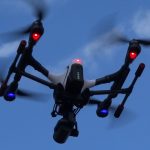
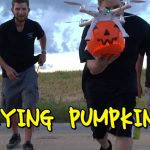
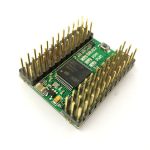
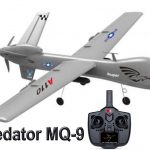
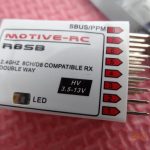

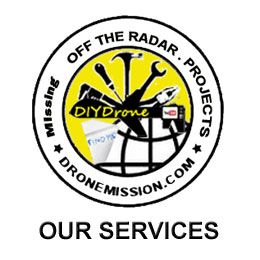


Leave a Reply
You must be logged in to post a comment.